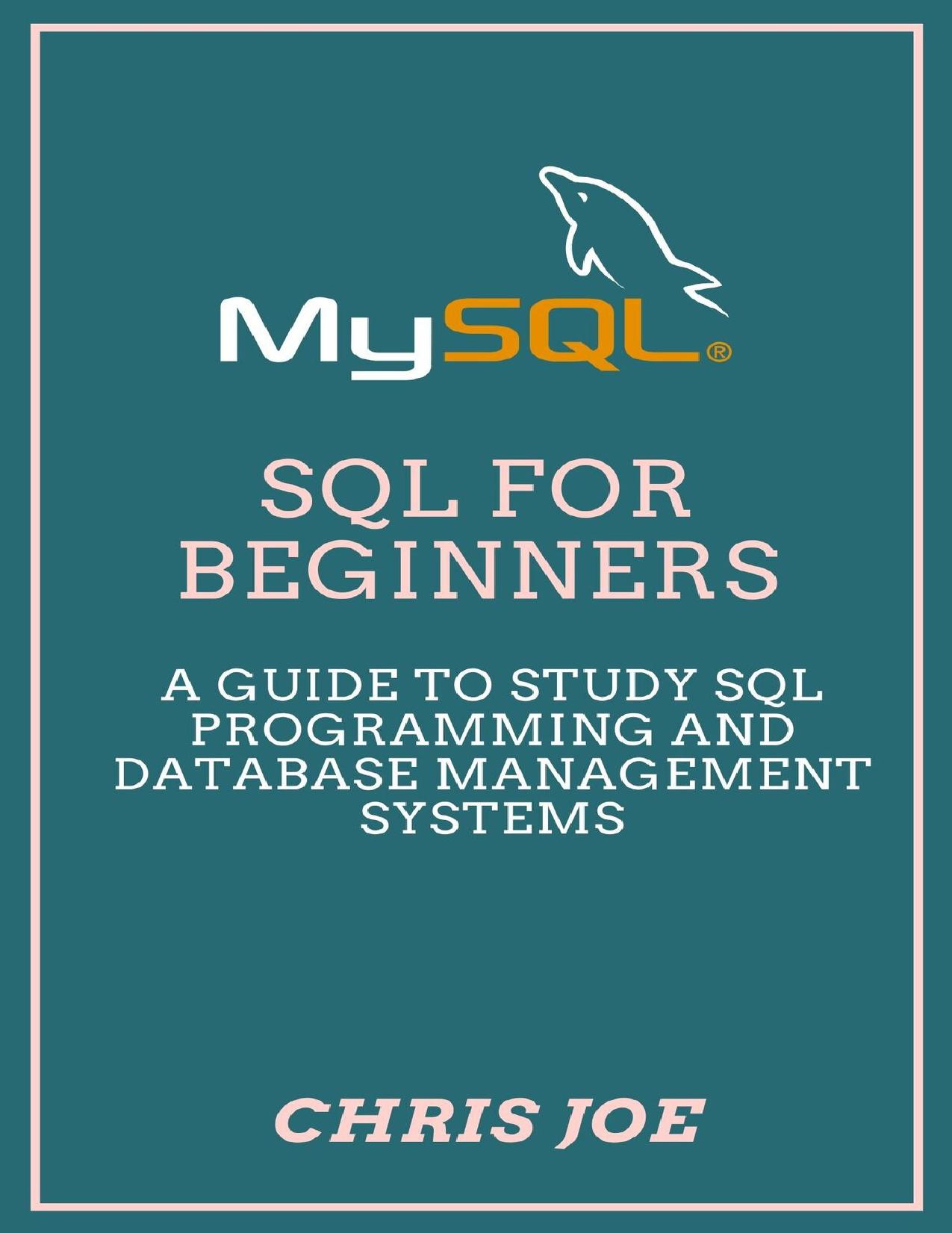SQL for Beginners: A Guide to Study SQL Programming and Database Management Systems by Joe Chris

Author:Joe, Chris [Joe, Chris]
Language: eng
Format: epub, pdf
Published: 2021-05-13T00:00:00+00:00
Chapter 4
Exploring Data with SELECT
Working with data sets isn't all silly buffoonery, anyway, it has a decent part and you'll find it w.hen you begin breaking down the actual information rather than simply assembling and putting away it. Ensuring that the information is exact and clean is a significant piece of the cycle, anyway, the main thing is how important it is.
Envision the information examination as the connection between a questioner and a possible worker. The interaction is comparable. The objective of the questioner is to ask whatever number of inquiries could be allowed to ensure that the candidate isn't lying about his range of abilities and that he is pretty much as skilled as he says he is on his CV. This is the way the fact of the matter is found. Envision finding that your information base is missing names or they are wrongly spelled. Dates are wrong and they don't fit with what you have on paper. The entirety of this data you find is because of the information talking with measure.
In this section, we will zero in on information investigation utilizing perhaps the most remarkable SQL proclamations. We have effectively utilized it in past models, anyway, you should acquire a more point-by-point comprehension of it.
SELECT Syntax
At the point when you work straightforwardly in SQL, the cycle is performed with the incredible SELECT catchphrase. Basically, its motivation is to separate the lines and segments from one, a few, or all tables from your information base.
Select explanations don't need to be convoluted. In some cases, you just need to separate all that a table contains. Nonetheless, it can likewise be utilized in complex tasks that include associating 100 tables while additionally doing all the estimations expected to separate the data you're searching for. For the present, we will zero in on the fundamental articulations so you get a decent handle of the talking cycle.
Here's a basic model that shows you how you can gather every line and section:
SELECT * FROM this_table;
This is the least difficult SQL inquiry sentence structure you can compose while meeting the information. You may have effectively seen that incomparable questions we utilized in past parts we generally needed to present the indicator image. Presently is the fitting opportunity to discover that it is considered a special case character. This means it represents worth. Nonetheless, it doesn't address something explicit, however basically fills in as anything that worth could be. In this model, putting it after the SELECT catchphrase implies that we order SQL to pick every segment. We could supplant the reference bullet with the name of a section all things being equal if we might want to choose its information.
Then, we have the FROM watchword. It delineates the way that we need some specific information to be gotten back from the table. At last, as referenced prior, we end the assertion with a semicolon to check the inquiry's decision.
Download
SQL for Beginners: A Guide to Study SQL Programming and Database Management Systems by Joe Chris.pdf
This site does not store any files on its server. We only index and link to content provided by other sites. Please contact the content providers to delete copyright contents if any and email us, we'll remove relevant links or contents immediately.
| Access | Data Mining |
| Data Modeling & Design | Data Processing |
| Data Warehousing | MySQL |
| Oracle | Other Databases |
| Relational Databases | SQL |
Algorithms of the Intelligent Web by Haralambos Marmanis;Dmitry Babenko(16234)
Azure Data and AI Architect Handbook by Olivier Mertens & Breght Van Baelen(7674)
Building Statistical Models in Python by Huy Hoang Nguyen & Paul N Adams & Stuart J Miller(7655)
Serverless Machine Learning with Amazon Redshift ML by Debu Panda & Phil Bates & Bhanu Pittampally & Sumeet Joshi(7529)
Driving Data Quality with Data Contracts by Andrew Jones(7292)
Data Wrangling on AWS by Navnit Shukla | Sankar M | Sam Palani(7290)
Machine Learning Model Serving Patterns and Best Practices by Md Johirul Islam(7029)
Learning SQL by Alan Beaulieu(6237)
Weapons of Math Destruction by Cathy O'Neil(6214)
Big Data Analysis with Python by Ivan Marin(5933)
Data Engineering with dbt by Roberto Zagni(4930)
Solidity Programming Essentials by Ritesh Modi(4565)
Time Series Analysis with Python Cookbook by Tarek A. Atwan(4399)
Pandas Cookbook by Theodore Petrou(4086)
Blockchain Basics by Daniel Drescher(3540)
Natural Language Processing with Java Cookbook by Richard M. Reese(3143)
Hands-On Machine Learning for Algorithmic Trading by Stefan Jansen(3042)
Learn T-SQL Querying by Pam Lahoud & Pedro Lopes(2929)
Feature Store for Machine Learning by Jayanth Kumar M J(2925)
